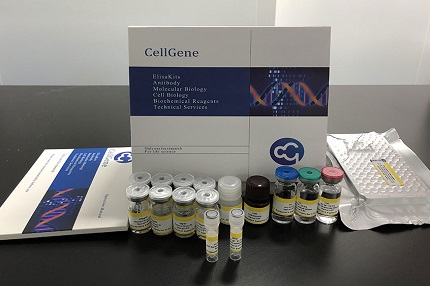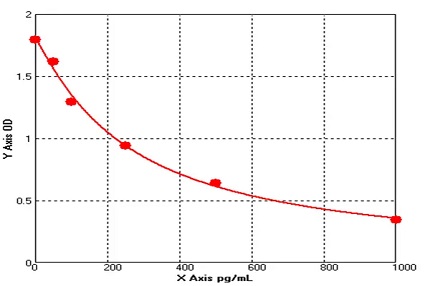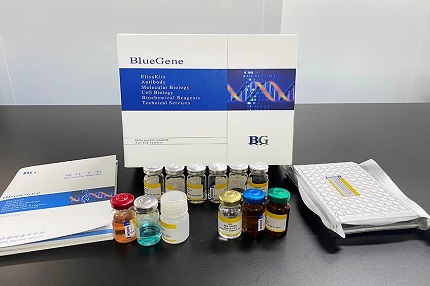E03H0051 Mouse Hepcidin ELISA kit
The Mouse Hepcidin ELISA kit can be used to identify samples from the mouse species. Hepcidin can also be called HAMP, HEPC, HFE2B, LEAP1, PLTR, hepcidin antimicrobial peptide, Hepc.


E03H0051 Mouse Hepcidin ELISA kit
The Mouse Hepcidin ELISA kit can be used to identify samples from the mouse species. Hepcidin can also be called HAMP, HEPC, HFE2B, LEAP1, PLTR, hepcidin antimicrobial peptide, Hepc.
Product Information | |
Cat. No. | E03H0051 |
Product Name | Mouse Hepcidin ELISA kit |
Species | Mouse |
Product Size | 48 Tests / 96 Tests |
Concentration | 25-500ng/mL |
Sensitivity | 1.0ng/mL |
Principal | Competitive ELISA |
Sample Volume | 100 ul |
Sample Type | Serum, plasma, cell culture supernatants, body fluid and tissue homogenate |
Assay Time | 90 minutes |
Platform | Microplate Reader |
Conjugate | HRP |
Detection Method | Colorimetric |
Storage | 2-8°C |
Kit Components | ||
MATERIALS | SPECIFICATION | QUANTITY |
MICROTITER PLATE | 96 wells | stripwell |
ENZYME CONJUGATE | 6.0 mL | 1 vial |
STANDARD A (0.5mL) | 0 ng/ml | 1 vial |
STANDARD B (0.5mL) | 25 ng/ml | 1 vial |
STANDARD C (0.5mL) | 50 ng/ml | 1 vial |
STANDARD D (0.5mL) | 100 ng/ml | 1 vial |
STANDARD E (0.5mL) | 250 ng/ml | 1 vial |
STANDARD F (0.5mL) | 500 ng/ml | 1 vial |
SUBSTRATE A | 6 mL | 1 vial |
SUBSTRATE B | 6 mL | 1 vial |
STOP SOLUTION | 6 mL | 1 vial |
WASH SOLUTION (100 x) | 10 mL | 1 vial |
BALANCE SOLUTION | 3 mL | 1 vial |
Principle of the Assay |
Hepc ELISA kit applies the competitive enzyme immunoassay technique utilizing an anti-Hepc antibody and an Hepc-HRP conjugate. The assay sample and buffer are incubated together with Hepc-HRP conjugate in pre-coated plate for one hour. After the incubation period, the wells are decanted and washed five times. The wells are then incubated with a substrate for HRP enzyme. The product of the enzyme-substrate reaction forms a blue colored complex. Finally, a stop solution is added to stop the reaction, which will then turn the solution yellow. The intensity of color is measured spectrophotometrically at 450nm in a microplate reader. The intensity of the color is inversely proportional to the Hepc concentration since Hepc from samples and Hepc-HRP conjugate compete for the anti-Hepc antibody binding site. Since the number of sites is limited, as more sites are occupied by Hepc from the sample, fewer sites are left to bind Hepc-HRP conjugate. A standard curve is plotted relating the intensity of the color (O.D.) to the concentration of standards. The Hepc concentration in each sample is interpolated from this standard curve. |
Coefficient of Variance | Intra Variation% <10% | |
Inter Variation% <12% | ||
Recovery | 95-102% | |
Linearity | Diluent Ratio | Range % |
1:2 | 93-105 | |
1:4 | 88-106 | |
1:8 | 86-108 | |
Specificity/Cross-reactivity | No significant cross-reactivity or interference between Hepc and analogues was observed. | |




E03H0051 has been referenced in the below publications:
Hydroxyurea Could Be a Good Clinically Relevant Iron Chelator.
n-Butanol soluble fraction of the water extract of Chinese toon fruit ameliorated focal brain ischemic insult in rats via inhibition of oxidative stress and inflammation.
Related Bluegene Biotech Products



